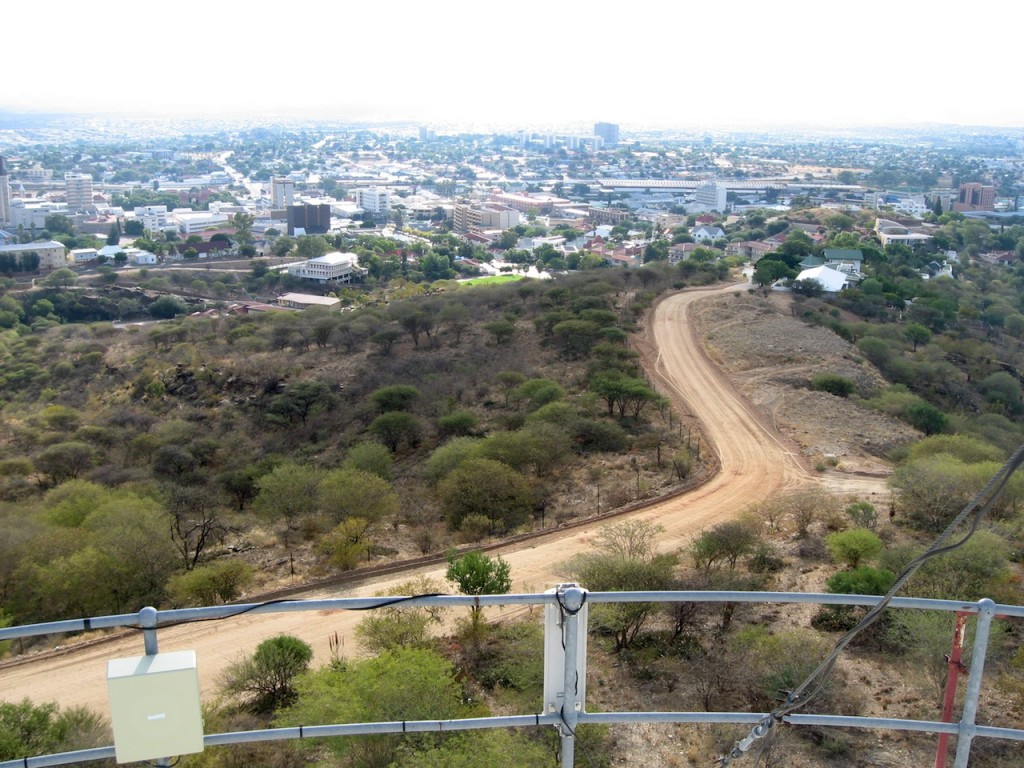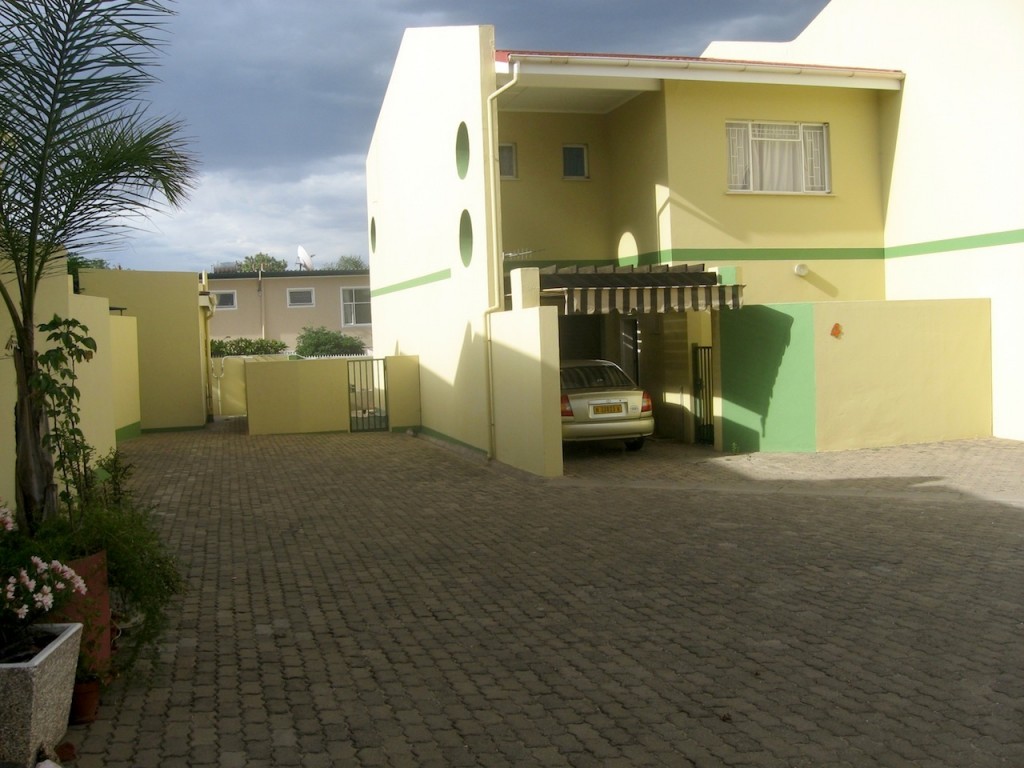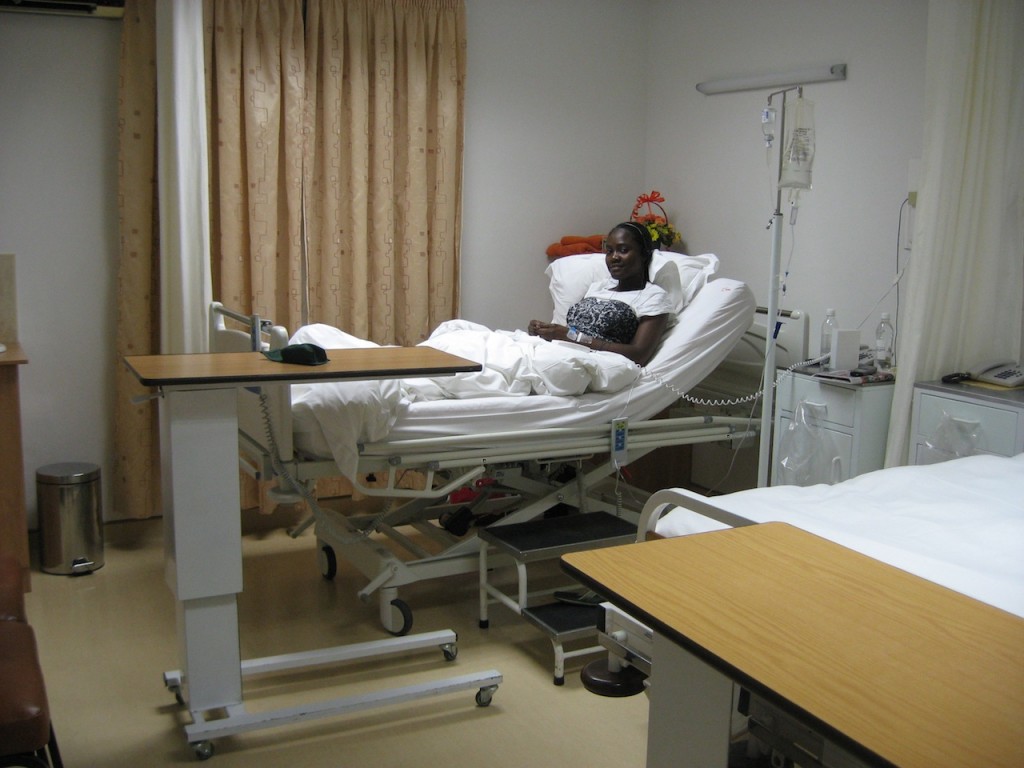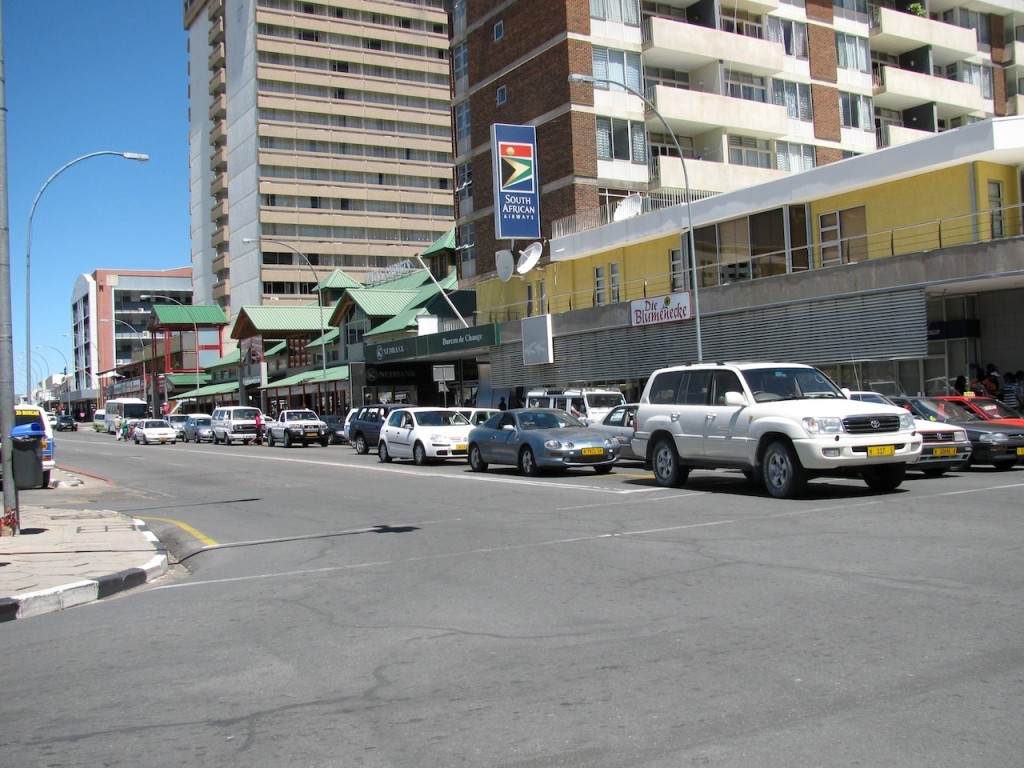Unless you plan on jumping out of a plane or chartering your own personal flight, you’ll undoubtedly travel through Windhoek. This first-world city is Namibia’s capital, and is currently home to about 270,000 people.
People from all of Namibia’s cultures live here, making it an interesting and exciting place to be.
Helena and Patrick have lived in this city since 2009.
When you get off the plane at Windhoek airport, you’re actually some 50 kilometers (30 miles) from Windhoek. When you walk across the tarmac and are impressed by the near-flat horizon in all directions and nothing but a small airport terminal in the distance, you’ll be thinking “where the heck am I?” I can assure you that Windhoek doesn’t look like that, so please don’t worry. In Windhoek, you can buy anything that you could buy in a city of comparable size (~270,000 people) in the US. I promise. You also don’t need to worry about medical care–private hospitals have filled the Government’s void and top notch care for any malady is available right here.
When in Windhoek, you won’t feel that you’re cut-off from the rest of the world.
Feel free to post your questions in the comments below. Can I buy _______? Almost definitely.
Security in Windhoek
In the busy city center, you’ll see people from many different cultures, you’ll be surprised with the just-like-my-city feeling, and your eyes will be busy taking in the sights. Stay aware of your surroundings while you’re walking around; pick-pockets are trained in the art of identifying newcomers. Ask locals about safe areas before you go exploring about, and then explore away!
Extra-urban Life
Windhoek is the city that makes development organizations think that there are no problems in Namibia. That’s because they don’t leave Windhoek. There are precious few urban areas in Namibia: Swakopmund, Walvis Bay, Okahandja, Otjiwarongo, Rehoboth, Tsumeb, Rundu, Mariental, Keetmanshoop, and Katima Mulilo are the big and medium ones.
For first-time visitors to Namibia, you’ll be surprised at how different cities are from towns, villages, and settlements. Cities in Namibia represent modernity, fortune, and cultural mixture. Cities are where the money is, and where most of the foreign people are. In any city in Namibia, visitors from the US or Europe will be able to find most anything they need.
Town, villages and settlements have been much less affected by external influence, and therefore these areas largely take on a cultural identity reflecting the area they are in. Visitors to Namibia who leave the cities will often be surprised at how different a small town is from Windhoek, Swakopmund, Walvis Bay or Tsumeb. Differences include lower income levels, completely “foreign” culture (which is actually native culture–you’re the foreigner), and less exposure to foreign people (which means interactions might be challenging because your expectations might be different from the local people’s expectations in any situation–prime example: customer service). You may also struggle to find something you need in a town, village or settlement. This should be seen as part of the charm of the area you’re visiting. Just be sure to get information on the place you’re going, and plan ahead.





What a nice city Windhoek is from what I have read and the pictures seen from the internet.
I really look forward someday to get an opportunity to visit Namibia but particularly windhoek